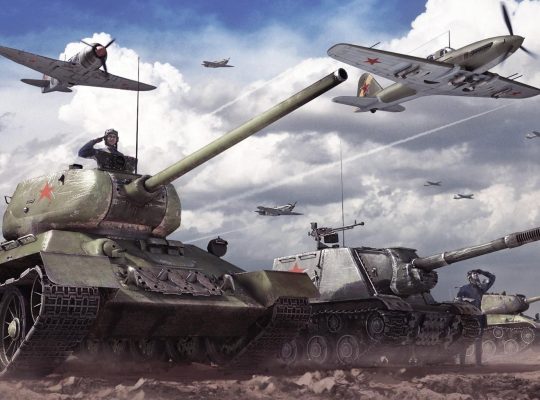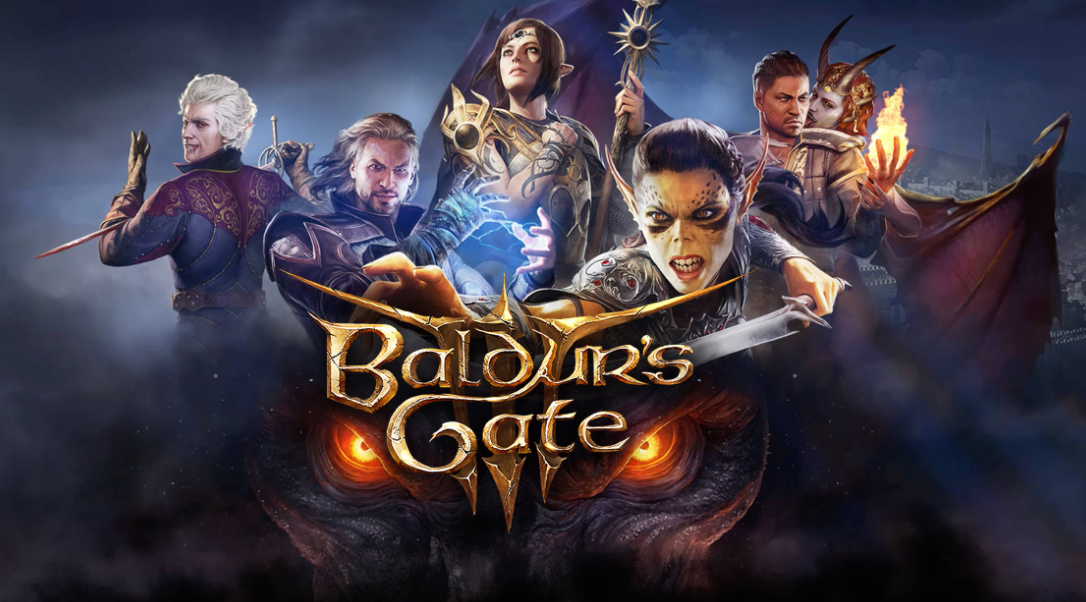Baldur’s Gate 3 immerses players in a world of consequential decisions. When facing a daunting demonic creature in the depths of an expansive underground temple, the player’s character, shaped by their choices, can persuade the monster to eliminate its infernal allies or even self-banish to the depths of the inferno. Alternatively, the adversary can be defeated through more traditional means—sword slashes, bursts of electricity, and strategic use of the environment, such as toppling barrels of grease and igniting the battlefield.
In another scenario, where the player character is tasked with retrieving a vital item secured in a heavily guarded room, a spectrum of choices unfolds. The player can opt for stealth, slipping into the room undetected, or employing effective deception to gain entry. Alternatively, a more direct approach involves turning the surrounding area into a chaotic battleground.
The roots of the Baldur’s Gate series trace back to 1998, crafted by BioWare, a studio that later achieved acclaim with renowned role-playing series like Mass Effect and Dragon Age. The initial two games, including Baldur’s Gate 2 in 2000, positioned BioWare as a leading developer in the realm of computer role-playing games (CRPG). However, as BioWare’s post-Baldur’s Gate projects increasingly incorporated a fusion of direct action and role-playing, the classic CRPG style, characterized by intricate statistics and text, began to recede into a niche market.
This shift left fans seeking the traditional CRPG experience to explore the offerings of developers like Belgium’s Larian Studios. Larian Studios found success with expansive and traditional CRPGs such as 2014’s Divinity: Original Sin and its 2017 sequel, Original Sin II. These games stood as beacons of the seemingly fading design ethos, providing a haven for enthusiasts amidst an evolving gaming landscape.
What is Baldur’s Gate 3 About?
Baldur’s Gate 3 has soared to the summit of video game charts, and the allure behind its popularity is a captivating journey into a vast fantasy realm teeming with history and larger-than-life characters. The game distinguishes itself by granting players unparalleled freedom to approach problems and quests in myriad ways. From steering conversations to determining success or failure, players wield the power to shape their character’s destiny and the trajectory of the entire game’s narrative. The world of Baldur’s Gate 3 is underpinned by intricate yet intuitive physics and rules, fostering an environment where experimentation is not just entertaining but also crucial for success.
Adding to its appeal, the game doesn’t shy away from the sensual. In the past decade, video games have increasingly embraced the concept of players forming romantic connections with in-game characters. Baldur’s Gate 3 takes this a step further, pushing boundaries with explicit sex scenes and a dose of violence that positions it as a title unsuitable for a younger audience. It’s worth noting that engaging in romantic relationships is optional.
Over my 50-plus hours of gameplay, I’ve tactfully declined numerous advances, ranging from sweet and awkward propositions to scenarios that, in the real world, might warrant a report to human resources. Baldur’s Gate 3, in essence, marries a rich gaming experience with an exploration of complex relationships, ensuring it stands out in the evolving landscape of video game narratives.
How to play Baldur’s Gate 3
Embarking on your journey in Baldur’s Gate 3 involves a pivotal decision: selecting a named character with pre-defined abilities and history or crafting protagonist protagonist. The characters initially left unchosen evolve into companions throughout the game, enriching the experience. While the character-creation screen might seem daunting, the advice is to choose what intrigues you; the companions in Baldur’s Gate 3 offer a myriad of options for combat, exploration, and engaging conversations, ensuring a forgiving environment for experimentation.
Yet, this character-creation phase unveils the game’s primary challenge—a complex amalgamation of systems and rules. Baldur’s Gate 3 faithfully translates the latest version of the Dungeons & Dragons pen-and-paper role-playing game into a PC game, incorporating the intricate mechanics and nuances of the tabletop experience. As you engage in various skills, abilities, and conversations, an authentic 20-sided die, a staple of D&D, materializes to determine the success of your endeavors.
On the surface, Baldur’s Gate 3 resembles an action game. However, once conversations commence, the influence of your chosen skills and attributes becomes evident. For instance, if you opt for a thief, dialogue options veer towards rogue-oriented choices, while wizards and sorcerers gain prompts to unravel the magical mysteries of their surroundings. Transitioning from a real-time point-and-click interface to a turn-based system during hostile encounters adds another layer of complexity. Die rolls indicating initiative for each creature on to the intricacy of the gameplay.
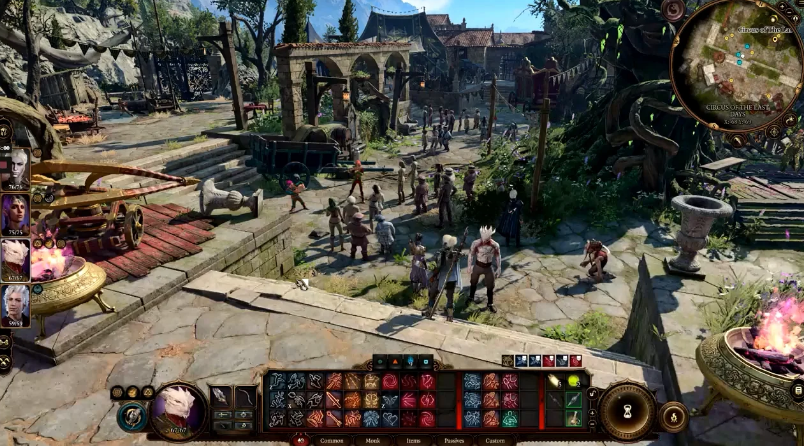
Navigating through the myriad rules might seem daunting at first. However, delving into the game, experimenting, and saving progress frequently can alleviate the learning curve, unless you wish to delve into extensive online research on the rules of 5th-edition D&D. Overcoming this initial hurdle reveals Baldur’s Gate 3 as a masterpiece of freedom and problem-solving opportunities. The game’s world operates on realistic principles—wood is flammable, oil and alcohol are combustible, water conducts electricity, and falling off a cliff is universally detrimental.
Each combat encounter in Baldur’s Gate 3 unfolds as an intricate dance of interactions and possibilities, often spanning various altitudes and locations. The game’s open-world nature empowers players to set up ambushes, surprise groups of monsters, unleash magical destruction, or stealthily navigate around and evade confrontations altogether.
Adding another layer of excitement, Baldur’s Gate 3 facilitates cooperative play for up to four friends online. Each player can independently explore the world, contributing to a dynamic and collaborative gaming experience. The inclusion of cooperative play extends the game’s allure, allowing friends to tackle challenges together, share strategies, and revel in the expansive freedom that Baldur’s Gate 3 offers. In essence, Baldur’s Gate 3 is not merely a game; it’s a complex and enthralling journey into a world where creativity and collaboration thrive.
Baldur’s Gate 3 Roll Your Character
Baldur’s Gate 3 unfolds with the classic theme of mythical peril, casting your hero into unimaginable danger. Captured by Cthulhu-like entities known as Mind Flayers, you find yourself implanted with an illithid creature, affectionately dubbed “The Tadpole,” set to metamorphose you into a Mind Flayer. However, the narrative takes an unexpected turn when dimension-hopping red dragons disrupt the Mind Flayers’ vessel, freeing you from their psychic clutches. The chaos propels you and your potential companions onto the Sword Coast’s beaches, marking the commencement of your arduous journey.
Before the tale unfurls, the player must engage with Baldur’s Gate 3’s character creation, a precursor to the multitude of choices that will shape the adventure. The character creator allows the selection of pre-made characters, who might otherwise become early party members or the crafting of a unique protagonist. With choices spanning 10 races and 12 classes, including Dragonborn, Drow, Bard, and Wizard, each race and class presents additional options, such as Seldarine Drow or Beast Tamer, adding depth to the character creation process and laying the foundation for the epic quest ahead.
Where RPG meets immersive sim in Baldur’s Gate 3
Venturing through Baldur’s Gate 3 solo provided a profound insight not only into the dynamics of the party but also into the game’s intricate systemic depth. The true brilliance of its combat lies in uncovering synergies among party members, surpassing the simplistic approach of spamming high-impact abilities merely to manipulate numerical values.
One illustrative instance involves coordinating Gale’s area-of-effect spell, Cloud of Daggers, which conjures a lethal tornado of daggers. While formidable on its own, the magic unfolds its full potential when tactically combined with my character’s upgraded Eldritch Blast, pushing enemies into the deadly vortex. This synergy showcases the intricacies of interconnected systems and how strategic thinking can leverage them to one’s advantage.
With each gained level, my team unlocked new abilities, elevating the complexity of a game already teetering on overwhelming. Even as I settled into combat patterns and established bread-and-butter combos, the prospect of a new ability sparked a mental cascade of creative possibilities, expanding my already vast arsenal.
The seemingly straightforward combination of Cloud of Daggers and Eldritch Blast serves as a mere glimpse into the expansiveness of Baldur’s Gate 3 systems. The game consistently surprised me with its responsiveness to diverse combinations and inventive solutions. The realization of the system’s potential crystallized during a mid-game dungeon, presenting a puzzle guarding a switch within a force field-protected room.
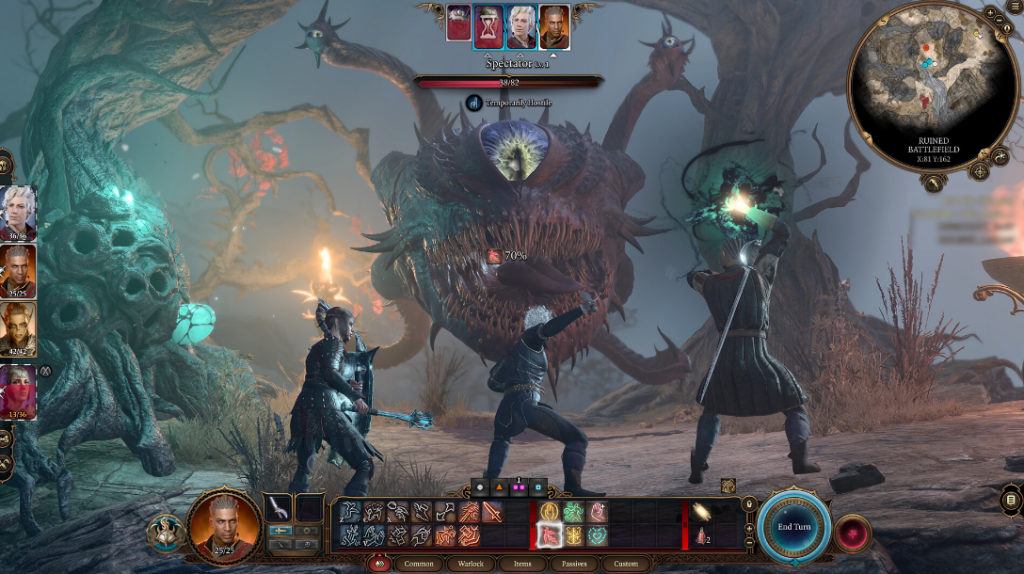
While the conventional approach involved navigating a complex puzzle laden with hazards, I opted for a more ingenious strategy. By casting Gaseous Form, my character transformed into a levitating cloud of smoke, bypassing the sensor-triggered force field and effortlessly reaching the objective, circumventing the puzzle entirely.
Baldur’s Gate 3 transcends the confines of a tactical RPG, providing players with a versatile toolkit and minimal restrictions, reminiscent of an immersive simulation. It actively encourages creative problem-solving by intertwining environmental elements with character abilities. The revelation that abilities could be utilized outside combat unlocked a realm of possibilities.
Armed with this understanding, I approached situations with the knowledge that the most apparent route wasn’t the only option. Teleporting past obstacles and turning invisible to elude armed guards became routine. Invisibility proved invaluable when faced with a locked door, allowing me to stealthily pick it without the risk of detection. The realization of these practical applications felt almost natural, as they mirrored the creative solutions one might employ in a tabletop campaign.
Baldur’s Gate 3, at its core, is a celebration of player agency and creativity. It transforms gameplay into a canvas of possibilities, urging players to view challenges not as obstacles but as opportunities for inventive solutions. The game’s immersion simulates the dynamic nature of a tabletop experience, fostering a sense of freedom that extends far beyond the constraints of traditional RPGs. In the end, Baldur’s Gate 3 stands as a testament to the evolving landscape of role-playing games, where adaptability and imagination intertwine to create a truly captivating and boundless gaming experience.
Baldur’s Gate 3 – Flexible Combat
Combat in Baldur’s Gate 3 seamlessly mirrors the flexibility and authenticity of Dungeons & Dragons, albeit within a more structured framework than free-roaming exploration. Upon entering battle, the game shifts to a turn-based mode where all participating characters and creatures engage in rolling for turn order. Each turn grants participants the ability to move a designated distance, execute an action, or perform a bonus action.
Actions encompass a range of possibilities, from standard attacks to utilizing skills and casting spells. While magic-based classes utilize spells to enhance combat versatility, the game ensures that physical-focused classes have a plethora of choices. For instance, Barbarians and fighters can execute not only basic attacks but also special maneuvers or skills based on their subclass and equipped weapon. This variety prevents any class from being confined to a monotonous “move and hit” routine each turn.
Bonus actions introduce an additional layer of versatility, enabling players to perform extra moves even after executing a full action. These bonus actions encompass casting minor spells, executing specific follow-up attacks, consuming potions, or strategically repositioning on the battlefield. They play a crucial role in ensuring that your party maintains an advantageous position to withstand the challenges of the next turn, including any incoming attacks.
Baldur’s Gate 3 Lands a Critical Hit
Baldur’s Gate 3 sets a new standard for tabletop-inspired CRPGs. With unparalleled flexibility catering to diverse player choices, it stands as the most authentic adaptation of a Dungeons & Dragons campaign. The stunning presentation breathes life into the realms of Faerun. Offering a captivating experience, it invites players to invest 60 hours, complete the game, and then embark on a fresh journey with a different character for a remarkably distinct adventure. A true successor to Baldur’s Gate 2, it rightfully earns the title of an Editors’ Choice winner for RPGs.
With density comes friction
Baldur’s Gate 3’s depth, while enriching, presents challenges, partly due to a lack of clarity. The game immerses players in complexity, occasionally resulting in frustration. The journal, a vital tool, often proves vague, leading to head-scratching moments where deciphering quest hints feels like hitting a wall. Critical information might be hidden in seemingly unrelated side quests on the opposite side of the map, delving into convoluted adventure game logic.
The game’s difficulty stems not only from challenging fights but also from deciphering obscure clues. While the intricate design caters to an open-ended experience, a more explanatory journal could have mitigated unnecessary frustration, offering a smoother journey through the intricacies of Baldur’s Gate 3.
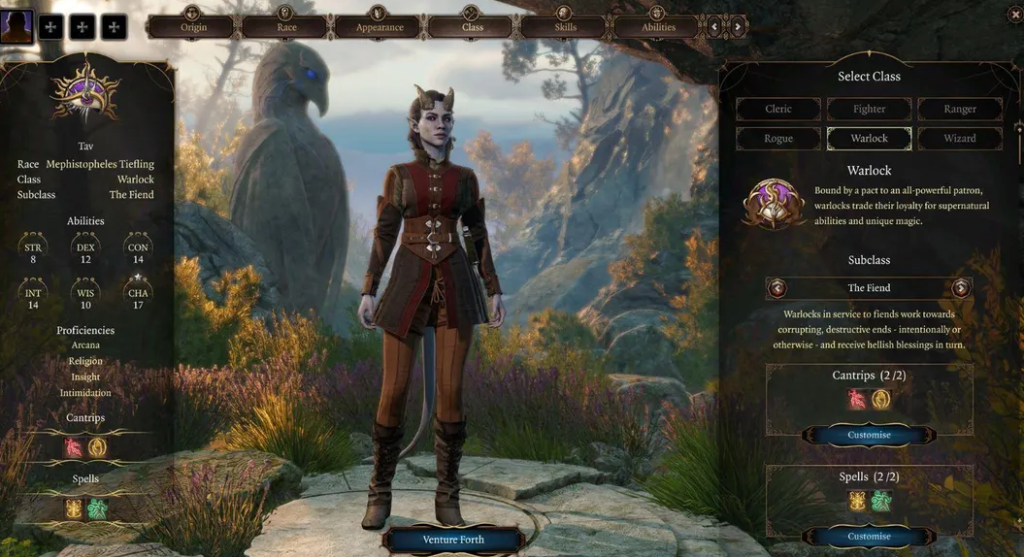
The Run Down – Our Five-Point Rating for Baldur’s Gate 3
Gameplay – 5: Baldur’s Gate 3 authentically captures the essence of a tabletop adventure, heavily drawing from its pen-and-paper predecessor with a well-balanced mix of guidance for novices. The mechanics showcase a robust build, providing a commendable blend of character customization and a seamless integration of automatic and manual dice rolling.
Visuals – 4: The environmental visuals in Baldur’s Gate 3 are striking, reflecting meticulous attention to detail. However, character animations, camera angles, and certain effects display a somewhat dated feel, although the overall impression remains above average.
Audio – 4: The standout feature in Baldur’s Gate 3 is the outstanding voice acting, accompanied by well-implemented effects. While background chatter may become repetitive during map traversal, the monumental effort evident in the recording of thousands of vocal lines underscores the commitment of the Larian team.
Narrative – 5: The narrative in Baldur’s Gate 3, subject to player choices, weaves an intricate tapestry of brilliant storylines. The beauty of Dungeons & Dragons is encapsulated in the multitude of captivating narrative threads, allowing players to shape their destiny, even if the potential for self-inflicted mishaps adds to the charm.
Replay – 5: Baldur’s Gate 3 boasts nearly boundless replay value. Each new character introduces the potential for varied play styles, influencing the evolving narrative in subsequent playthroughs. The inclusion of multiplayer options, Twitch integration, and other features not only accommodates but generously rewards multiple engagements with the game, solidifying its status as a highly replayable masterpiece.
Read More – Blasphemous 2 Review – A Macabre Metroidvania Grim world


